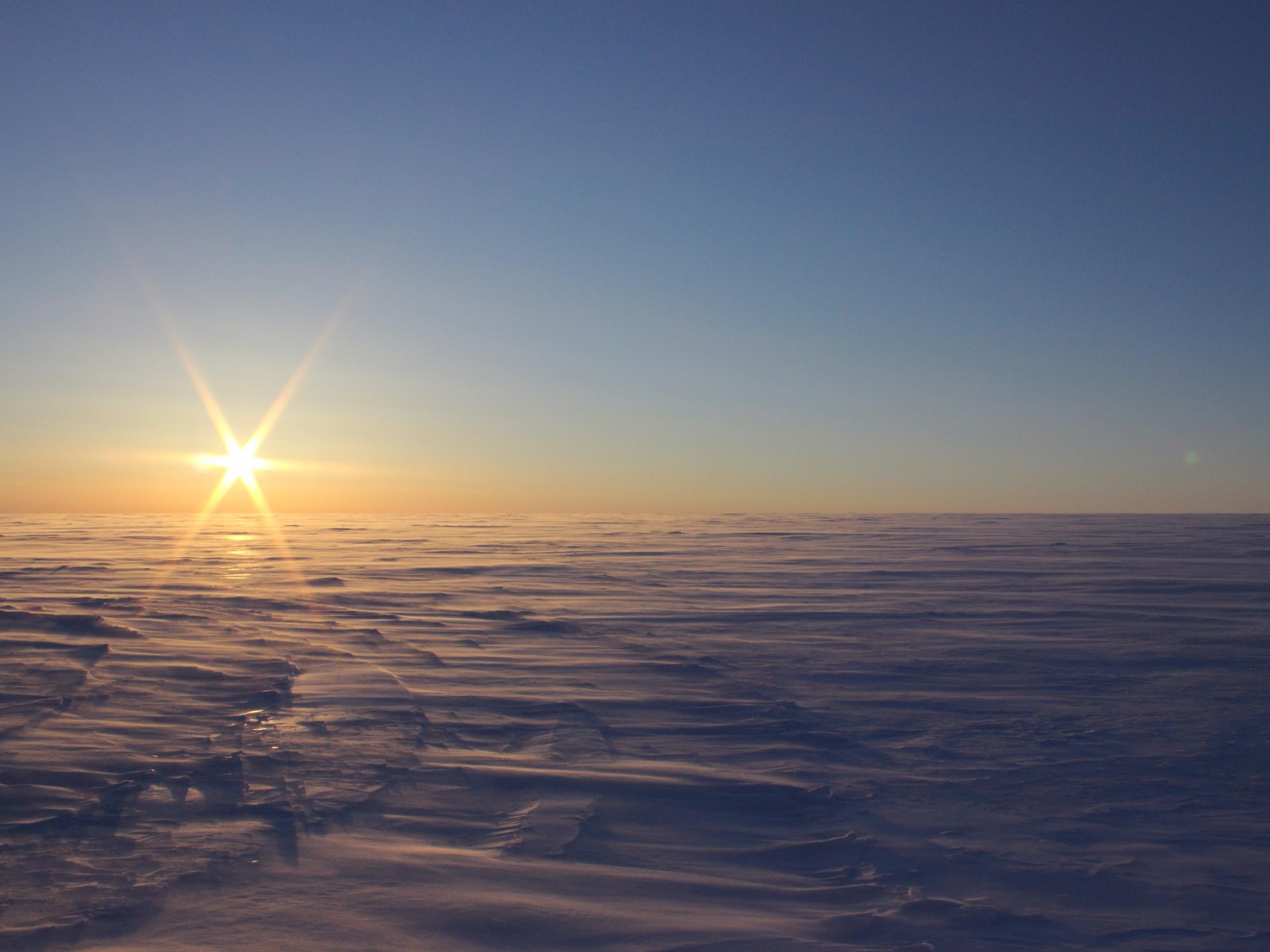Hyper-salty lakes discovered in Canada offer clues about alien life on Jupiter’s moon
Pools of water 750m below Arctic ice could be home to life that has evolved in isolation for 120,000 years

The unexpected discovery of two incredibly salty lakes underneath the Canadian Arctic could help scientists understand alien life.
Located around 750 metres below the ice, experts think these “hypersaline” pools may be home to tiny creatures that have evolved in complete isolation for 120,000 years.
As the conditions under the ice are so similar to those found on Europa, one of Jupiter's moons, the Canadian lakes could serve as a useful stand-in when investigating extraterrestrial life.
The discovery was made by PhD student Anja Rutishauser while she was studying radar data collected by Nasa from Canada’s Devon Ice Cap, in an effort to understand the bedrock underneath the ice.
By sending electromagnetic waves through the ice and measuring them as they bounce back, it is possible to “see” through the ice and build up a picture of what lies beneath it.
"We weren't looking for subglacial lakes. The ice is frozen to the ground underneath that part of the Devon Ice Cap, so we didn't expect to find liquid water," said Ms Rutishauser, who is based at the University of Alberta.
"We saw these radar signatures telling us there's water, but we thought it was impossible that there could be liquid water underneath this ice, where it is below -10C."
The discovery was published in the journal Science Advances.
Other lakes have been found buried beneath ice caps, mainly in Antarctica, but this was the first one discovered in the Canadian Arctic.
Crucially, this was also the first discovery of such a lake full of brine – a feature the researchers think arises due to salty rocks dissolving in the water.
It is this salinity that marks the Devon Ice Cap lakes out. If they turn out to be home to microscopic life – something the researchers think is a possibility – it will help scientists understand life outside our planet.
"We think they can serve as a good analogue for Europa, one of Jupiter's icy moons, which has similar conditions of salty liquid water underneath – and maybe within – an ice shell," said Ms Rutishauser.
Europa is often singled out as one of our greatest hopes for finding extraterrestrial life. Nasa has previously explored the possibility of sending a lander to the distant moon to search for alien life.
Before they can contribute to the search for life beyond our planet, however, Ms Rutishauser and her colleagues will have to demonstrate that there is life in the extreme conditions found beneath the Devon Ice Cap.
"If there is microbial life in these lakes, it has likely been under the ice for at least 120,000 years, so it likely evolved in isolation," said Ms Rutishauser.
“If we can collect a sample of the water, we may determine whether microbial life exists, how it evolved, and how it continues to live in this cold environment with no connection to the atmosphere."
While the Devon discovery is the first of its kind, the scientists think they could be the first of many, and Ms Rutishauser predicts there could be a network of salty water systems underneath the Canadian Arctic.
Join our commenting forum
Join thought-provoking conversations, follow other Independent readers and see their replies
Comments